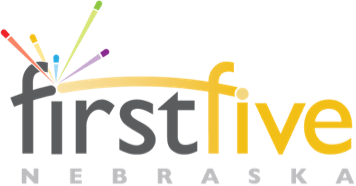It’s one thing to know that a significant portion of Nebraska’s youngest children begin their lives in households facing serious financial challenges. It’s another thing to see how those children are distributed across our state’s legislative districts.
This week, First Five Nebraska published its annual legislative district heat map showing concentrations of children under age 6 in Nebraska households at or below 185% of the Federal Poverty Level (FPL). This threshold—which corresponds to eligibility for the National School Lunch Program (often called the free and reduced lunch program)—is traditionally recognized as an indicator of increased risk to children’s developmental outcomes.
As context, 185% FPL corresponds to an annual household income of $51,338 for a family of four in the contiguous 48 states, including Nebraska. Considering that disposable diapers alone can cost a family as much as $840 per year on top of other, non-negotiable expenses, it’s hardly surprising that low household incomes often correlate to limited options for healthy nutrition, access to health care services and quality early learning supports. In turn, these factors can profoundly undermine the long-term physiological, academic, social and even economic directions of children’s lives.
185% FPL is child care subsidy threshold
As of last year, 185% FPL has taken on additional significance to Nebraskans. Under LB485, passed by the Nebraska Legislature in 2021, it is also the (temporary) income eligibility threshold for our state’s Child Care Subsidy program. It’s no secret that the expense of purchasing child care of any type—not just the high-quality services we know young children need most—has considerably outpaced growth in household income in our state and elsewhere. As more families find themselves priced out of the child care marketplace, reliance on subsidized child care becomes increasingly important to parents who need to participate in the workforce to grow their families’ financial stability.
While federal funds make access to subsidized child care possible throughout the country, each state exercises a great deal of autonomy in deciding who does or does not qualify for these services. In 2002, Nebraska made access to the subsidy far more restrictive by lowering the income threshold from 185% to 120% FPL, where it remained for nearly two decades until 2019, when it was raised slightly to 130% FPL. Passage of LB485 temporarily raised the income threshold to 185% FPL—in part to offset some of the growing financial pressures on working families during the height of the COVID-19 pandemic. Unless legislative action is taken to extend LB485, eligibility for the Child Care Subsidy will return to 130% FPL in October 2023, putting Nebraska again behind neighboring states for access to this important support for families.
Shows what’s at stake
So why do we map the distribution of children under age 6 from families at or below the 185% threshold? The short answer is, it helps us anticipate which areas of Nebraska are likely to suffer most if subsidized child care is once again made alarmingly inaccessible. Those consequences extend to the hazards young children face when they are denied consistent, nurturing early developmental experiences while their parents work diligently to support their households. It gives us a sense of where social and economic stressors will most severely impact families, child care providers, employers and entire communities. If we believe—as we ought—that what happens in Wayne, Auburn or North Omaha matters to the social and economic viability of our state as a whole, mapping Federal Poverty Level data is a compelling way of showing what’s at stake for all of us.
- View the Nebraska state heat map and a sortable chart by legislative district
- Learn more about LB485



